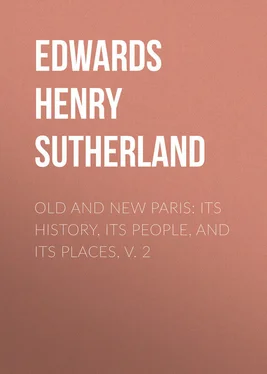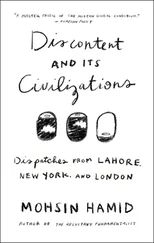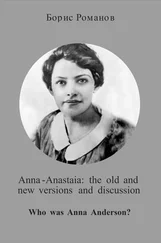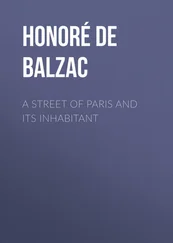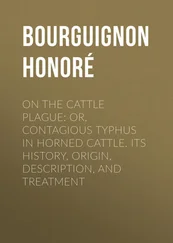Henry Edwards - Old and New Paris - Its History, Its People, and Its Places, v. 2
Здесь есть возможность читать онлайн «Henry Edwards - Old and New Paris - Its History, Its People, and Its Places, v. 2» — ознакомительный отрывок электронной книги совершенно бесплатно, а после прочтения отрывка купить полную версию. В некоторых случаях можно слушать аудио, скачать через торрент в формате fb2 и присутствует краткое содержание. Жанр: foreign_antique, foreign_prose, Путешествия и география, на английском языке. Описание произведения, (предисловие) а так же отзывы посетителей доступны на портале библиотеки ЛибКат.
- Название:Old and New Paris: Its History, Its People, and Its Places, v. 2
- Автор:
- Жанр:
- Год:неизвестен
- ISBN:нет данных
- Рейтинг книги:4 / 5. Голосов: 1
-
Избранное:Добавить в избранное
- Отзывы:
-
Ваша оценка:
- 80
- 1
- 2
- 3
- 4
- 5
Old and New Paris: Its History, Its People, and Its Places, v. 2: краткое содержание, описание и аннотация
Предлагаем к чтению аннотацию, описание, краткое содержание или предисловие (зависит от того, что написал сам автор книги «Old and New Paris: Its History, Its People, and Its Places, v. 2»). Если вы не нашли необходимую информацию о книге — напишите в комментариях, мы постараемся отыскать её.
Old and New Paris: Its History, Its People, and Its Places, v. 2 — читать онлайн ознакомительный отрывок
Ниже представлен текст книги, разбитый по страницам. Система сохранения места последней прочитанной страницы, позволяет с удобством читать онлайн бесплатно книгу «Old and New Paris: Its History, Its People, and Its Places, v. 2», без необходимости каждый раз заново искать на чём Вы остановились. Поставьте закладку, и сможете в любой момент перейти на страницу, на которой закончили чтение.
Интервал:
Закладка:
French painting of the sixteenth century is represented by the school of Janet and his successors, but the true house decoration in those luxurious days, when art was mixed up with every detail of life, was tapestry. It was scarcely possible to feel dull in those vast halls, whose walls were covered, and, so to say, animated by a number of life-sized figures, now chasing the stag in picturesque woods, now sitting down to sumptuous feasts, now breaking lances in tournaments and jousts.
Many of these ancient tapestries have become worn out, less through the action of Time – for they were admirably woven – than through the carelessness of their possessors. The Hôtel Cluny preserves some of the best that were ever produced. Take, for example, the Deliverance of St. Peter, executed at Beauvais in the fifteenth century, or the ten embroidered pictures which tell the history of David and Bathsheba, done in Flanders under Louis XII. The biblical personages who figure in this illustrated story are dressed, of course, in the latest fashion of the year 1500; and the costumes are more interesting inasmuch as the artist who furnished the cartoons for these pictures was undeniably, with all his naïveté , an excellent draughtsman. Of another epoch, when art was already on the decline, are the tapestries taken from the arsenal, in which Henry IV. is represented as Apollo, Jeanne d’Albert as Venus, and Marie de Médicis as Juno. The painter, in his passion for allegory, has transformed into Saturn the king’s father, Antoine de Bourbon. Many other tapestries, in various states of preservation, and of which the colours have, in many cases, faded beneath the effect of sunlight, possess both artistic and historic interest. The vestments once worn by the Bishop of Bayonne were found in a tomb, and belong to the twelfth century. All kinds of strange contrivances worn by women in past ages (often, it must be supposed, against their will) are to be seen in the Hôtel Cluny: collars, collarettes, baskets, farthingales, girdles, and even high-heeled pattens, all made of iron.
The furniture preserved in the Hôtel Cluny is particularly fine, and is as historical as it is artistically beautiful. Remarkable among the examples of church furniture is the great sideboard of the Cathedral of St. Paul, carved by a Cellini of the fifteenth century. He must have spent his whole life at the work. Nor is the house furniture less magnificent. Witness the delicate sculpture of the benches, the high chairs with emblazoned backs, the chests for marriage gifts, the bed which is said to have belonged to Francis I., the cabinets of all times and of every shape, the harpsichords, the spinets, the gala carriages, covered with gildings, the sledges, the sedan chairs, and a hundred other objects of luxury: reminiscences of a time when between the workman and the artist there was scarcely any distinction, and when objects destined for the most common use were fashioned and adorned with an elegance and grace which told of true artistic feeling.
In the ancient mansion of Jacques d’Amboise, innumerable other objects might be pointed out either marvellous as works of art or deeply interesting, as illustrating the daily life of past ages, which they reproduce more vividly, perhaps, than any books could do.
Strange as it will appear to Englishmen, the Hôtel Cluny is not only open to the public on Sundays, but is open to the public on Sundays only. On other days permission to visit the museum must be obtained from the Minister of Fine Arts. Exceptions are made in favour of foreigners exhibiting their passports.
CHAPTER XVI.
THE MUSÉE D’ARTILLERIE
THE Museum of Artillery, with its varied and admirably classified collection of arms, takes us back to prehistoric times, and after exhibiting rude martial implements of dim antiquity, brings us forward through successive ages of arms until it at length produces the very piece which is to-day in the hands of the French soldier.
The origin of the Musée d’Artillerie may be traced to the reign of Louis XIV. The Duc d’Humières, Grand Master of Artillery, obtained of the great monarch permission to place, in one of the halls of the royal magazine at the Bastille, a collection of small models of artillery then in use. This collection, intended to serve for the instruction of young artillery officers, was exhibited in glass cases.
The Duc de Maine and the Comte d’Eu, who succeeded d’Humières, did nothing towards the development of this happy idea, which was only resumed on the abolition of the post of Grand Master in 1755 by Lieutenant-General de Vallières, who succeeded the count as First Inspector-General. A certain number of ancient arms and of new models were transported to the Academy, and an inventory of the collections, which is still extant, was prepared. In 1788 the celebrated General de Gribeauval, regarded by French writers as the creator of modern artillery, succeeded de Vallières as Inspector-General. It was by means of little models constructed beneath his eyes that Gribeauval had prosecuted his studies, and it was his familiarity with models which enabled him to determine the precise form of the arms to be employed in his new system.
The idea of these little models extended itself to all the machines used in the artillery, as likewise to those ancient arms of which specimens had been preserved. Generalising his idea, Gribeauval determined to apply it to the creation of a complete establishment, and his project was in due time realised. The Minister of War, Comte de Brienne, at the reiterated recommendation of the general, granted to Rolland, Commissary of War and chief in the office of General Inspection of Artillery, a commission which named him director of the new museum. The programme proposed by Gribeauval embraced every description of war implements, whether past or present; nor did it exclude a collection of all the projects which had hitherto been proposed to the State by inventors.
This comprehensive scheme, executed with intelligence and activity, almost immediately gave the happy results which had been anticipated. Objects of all kinds, manufactured with great care in provincial establishments of artillery, arrived in shoals at Paris, and were united with the assemblage of ancient arms and armour which already existed in the royal magazine. This was a moment of growth and prosperity for the new institution. Very soon, however, its progress was to be checked, and its existence threatened by the grave events of 1789. On the 14th of July the arsenal of the artillery was devastated, and its collections almost entirely destroyed. Gribeauval was spared the pain of witnessing the destruction of the work to which he had wished to attach his name. He died on the 7th of May, 1789, two months before the taking of the Bastille.
Curiously enough, however, that same revolution which seemed to have finally wrecked the new museum gave it suddenly a second life, and afforded it an opportunity of wide and rapid development.
From 1791 to 1794 the national factories were inadequate to supply the wants of the army. The system of requisitions which was vigorously enforced brought into the arsenals considerable quantities of arms of all kinds, as well as armour. A commission named by the Ministry had to select therefrom what was serviceable, and to reject what was useless. Regnier, attached to the commission as “Controller of Arms,” conceived the happy notion of putting aside every object which seemed to him to possess particular interest, and which at the same time was of no practical use. The assortment he thus made was placed temporarily in the Convent of the Feuillants. Here it was inspected by Pétier, Minister of War, who, perceiving the future utility of such a collection, caused it to be transferred to the Convent of the Dominicans of Saint Thomas Aquinas. Here it was enhanced by the addition of those models which the before-mentioned Rolland had managed to save from the destruction of the Bastille. The whole was placed under the charge of the newly-formed “Committee of Artillery”; and thus in 1796 the museum obtained its re-organisation.
Читать дальшеИнтервал:
Закладка:
Похожие книги на «Old and New Paris: Its History, Its People, and Its Places, v. 2»
Представляем Вашему вниманию похожие книги на «Old and New Paris: Its History, Its People, and Its Places, v. 2» списком для выбора. Мы отобрали схожую по названию и смыслу литературу в надежде предоставить читателям больше вариантов отыскать новые, интересные, ещё непрочитанные произведения.
Обсуждение, отзывы о книге «Old and New Paris: Its History, Its People, and Its Places, v. 2» и просто собственные мнения читателей. Оставьте ваши комментарии, напишите, что Вы думаете о произведении, его смысле или главных героях. Укажите что конкретно понравилось, а что нет, и почему Вы так считаете.
